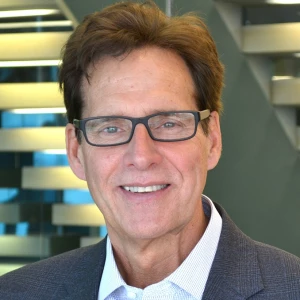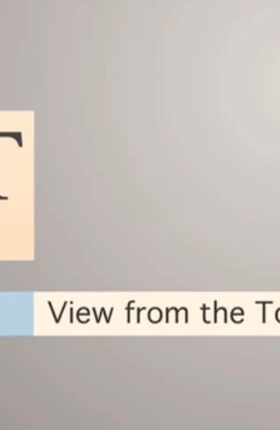Corporate executives find sharp cultural differences upon joining social mission organizations (SMOs). For business leaders accustomed to the tools of hard accountability, clear reporting lines, and strong financial incentives, the culture of an SMO can feel foreign—even misguided.
But corporate executives have much to learn about the “soft levers” that leaders of SMOs use to catalyze transformative change in their organizations and the world. Here are the most important lessons for business leaders.
Captivate staff through purpose. SMO leaders know how important it is to communicate in ways that inspire their staff and reinforce the organization’s ethos. These chiefs share stories focused on the good the organization is doing and punctuated with personal experiences and anecdotes. SMO leaders are not afraid to summon the passion that drew people into the organization, make the work much bigger than the individual, and make urgent the need to change the world.
By reinforcing this sense of collective purpose, individuals have an opportunity to internalize and personalize the organization’s vision in terms of “your story, my story, and our story.” Leading change becomes far easier when the staff is inspired and work is viewed as a vocation. Corporate leaders should take note and share powerful narratives that grab employees in personal and inspiring ways. Such stories should illustrate “this is why we do what we do” and “here we are at our best.” For some leaders, it may require developing new muscles to become expositor in chief.
Start strategy with identity. Leaders of SMOs generally believe that “who I am guides me in what I do.” In that sense, identity is strategy. So rather than leading with the classic analysis of strengths, weaknesses, opportunities, and threats, SMO chiefs start with an exercise on identity. By sharpening the organization’s identity, leaders isolate today’s gaps and build tomorrow’s aspirations. This activity brings new vitality into how the staff understands and personally supports the organization’s vision and mission—particularly during difficult periods of transition. When the organization has clarity and energy around its identity, tough strategic choices can be viewed as a natural step in fulfilling its mission in a changing world. SMO leaders also use identity exercises to guide a community to initiate change: who am I, who are you, and how do we create change together.
Focus on tomorrow. Driven by a sense of urgency, leaders of SMOs stay highly focused on what can be done to create a better tomorrow. Corporate change efforts can consume months developing an elaborate case for change, delaying action in ways that can be detrimental to the cause. Corporate executives tend to create an exhaustive list of existing problems and an expectation that everything must be “fixed.” For leaders of SMOs, the aim is different: to move a group to action as quickly as possible. They articulate a clear vision for the future, build momentum through incremental change, and commit to continuous improvement.
Go slow to go fast. Perhaps the greatest contrast with the corporate world is the priority leaders of SMOs place on their engagement with staff and the broader community of stakeholders. SMO chiefs are highly attentive to the dynamics of engagement and, at times, maddeningly patient in gaining agreement with not only the communities they serve but also a wide net of stakeholders. But this very process of appreciative inquiry and active listening allows SMOs to mobilize the community and ultimately spur action.
For corporate executives, all this attention to process can be jarring. Corporate executives ask, “Can’t they just get on with it?” There are certainly cases where engagement goes beyond its value, but, on balance, it is hidden wisdom. Many of the subtle things that can derail change—including objections from the staff—are identified and resolved by taking time beforehand. Going through what appears to be a slow process up front allows significant, smart change to go fast because the staff is in agreement and can serve as powerful change agents. In this way, the process of creating engagement and agreement becomes an instrument of change.
Recognize that all change is local. A wise Brazilian social-change leader once said, “Your head thinks from where your feet stand, and unless you stand here, you will not understand.” Understanding the local culture is crucial during a significant transformation. SMOs embedded in a country tend to see local context as everything; they attend to cultural sensitivities and tailor their operating model to resonate with each local culture. Unfortunately, adapting to local context is often ignored or underplayed in corporate environments. One-size-fits-all change management approaches and communication methods rarely translate across nations or cultures. Companies that roll out change on a global level without adapting the approach to fit the local community will encounter serious roadblocks.
Embrace experimentation and change. SMOs race against the clock—their sense of urgency comes from seeing the struggles their beneficiaries and clients experience every day. SMOs are compelled to quickly implement changes that might improve the lives of those they serve. It’s not unusual to see staff implement change in an agile fashion, without waiting for every detail to be final. This behavior encourages more experimentation and an acceptance of change as part of the job. Corporations, too, can benefit from merging changes as soon as possible into their daily operations, rather than holding out for a single “big bang” release. This helps build the stamina for continuous improvement and ongoing transformation.
Bring the board in. Most SMO board members are highly mission-centered and passionate, often drawn to serve on the basis of a shared sense of calling and giving back. Consequently, they are highly attentive when the SMO faces large-scale change. The experienced SMO leader thinks deeply about how to help the board understand and manage the risks of transformative change. These leaders also encourage board members to test themselves and the quality of their governance as they participate in transformative change. Board members cannot allow themselves to become trapped in complex governing structures that were designed for yesterday’s challenges—they must ensure that their governance enables them to lead for tomorrow. Corporate boards, too, could benefit from testing the quality of their governance during transformative change efforts.
Although SMOs can unquestionably benefit from adopting proven corporate practices in certain areas, the best SMO leaders offer corporate executives vivid lessons in how to use purpose, identity, focus, process, local context, incremental improvement, and good governance to achieve deep and lasting change. With attention to these soft levers, corporations have an opportunity to achieve far more for their constituencies.





